
A kibbutz is an intentional community in Israel that was traditionally based on agriculture. The first kibbutz, established in 1910, was Degania. Today, farming has been partly supplanted by other economic branches, including industrial plants and high-tech enterprises. Kibbutzim began as utopian communities, a combination of socialism and Zionism. In recent decades, some kibbutzim have been privatized and changes have been made in the communal lifestyle. A member of a kibbutz is called a kibbutznik, the suffix -nik being of Slavic origin.

Haviva Reik was one of 32 or 33 parachutists sent by the Jewish Agency and Britain's MI9 on military missions in Nazi-occupied Europe. Reik went to Slovakia in fall 1944 and worked with local Jewish people to resist the German occupation there. She established a camp for Russian prisoners of war who had escaped, and helped organize a Jewish resistance unit. The Germans organized forces to put down the Jewish resistance, and Reik and the other parachutists escaped with about 40 local Jews into the mountains. In November 1944, however, Reik and the other parachutists were captured, killed, and buried in a mass grave.

The Ghetto Fighters' House, is a Holocaust museum founded in 1949 by members of Kibbutz Lohamei Hagetaot.

HaZore'a is a kibbutz in northern Israel established in 1936 by German Jews. It is the only kibbutz that was established by members of the Werkleute movement. Located in the western rim of the Jezreel Valley, it falls under the jurisdiction of Megiddo Regional Council. In 2022 it had a population of 930.
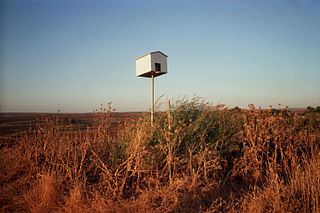
Gal On is a kibbutz in southern Israel. Located in the Shephelah, it falls under the jurisdiction of Yoav Regional Council. In 2022 it had a population of 615.

Mishmar HaEmek is a kibbutz in northern Israel. Located in the western Jezreel Valley, it falls under the jurisdiction of the Megiddo Regional Council. Mishmar HaEmek is one of the few kibbutzim that have not undergone privatization and still follow the traditional collectivist and socialist kibbutz model. In 2022, it had a population of 1,278. At least six former members of the Knesset hail from Mishmar HaEmek.
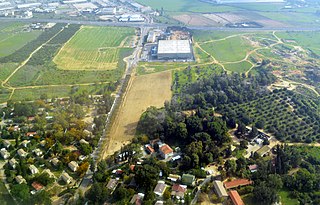
Givat Brenner, is a kibbutz in the Central District of Israel. Located around two kilometres south of Rehovot, it falls under the jurisdiction of Brenner Regional Council. Founded in 1928, it is named after writer Yosef Haim Brenner, who was killed in the Jaffa riots of 1921. In 2022 it had a population of 2,701. It is the largest kibbutz in Israel.

Ya'akov Hazan was an Israeli politician and social activist.

The University of Haifa is a public research university located on Mount Carmel in Haifa, Israel. Founded in 1963, the University of Haifa received full academic accreditation in 1972, becoming Israel's sixth academic institution and the fourth university. The university has the largest university library in Israel. As of 2019, approximately 18,000 students were enrolled at the University of Haifa. Among Israeli higher education institutions the University of Haifa has the largest percentage (41%) of Arab-Israeli students.

Nava Semel was an Israeli author, playwright, screenwriter and translator. Her short story collection Kova Zekhukhit was the first work of fiction published in Israel to address the topic of the "Second Generation"—children of Holocaust survivors.

David Resnick was a Brazilian-born Israeli architect and town planner whose awards include the Israel Prize in architecture and the Rechter Prize. Resnick, whose name is sometimes spelled in English as "Reznik" or "Reznick," is a past director of the Israeli Architects Association, and is known as one of Israel's "most celebrated modern architects".

Gideon (Gidi) Eilat (1924–2015) was a former member of the Palmach, commander of the third battalion of the Yiftach Brigade during the 1947–1949 Palestine war. He was active in the Kibbutz Artzi movement, one of the founders of the Civil Guard of the Israel Police Department, and a member of Kibbutz Beit Alfa.
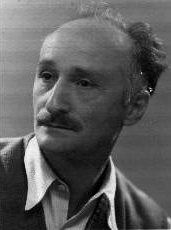
Alexander Bogen was a Polish-Israeli visual artist, a decorated leader of partisans during World War II, a key player in 20th century Yiddish culture, and one of the trailblazers for art education and Artists' associations in the emerging state of Israel.
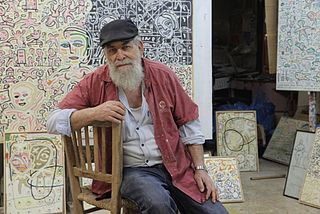
Shaul Knaz is an Israeli artist and writer, working and living in Gan Shmuel, a kibbutz in the Haifa District of Israel.

Givat Haviva is the national education center of the Kibbutz Federation in Israel founded in 1949. It is the oldest institution in Israel promoting reconciliation between Jews and Arabs.
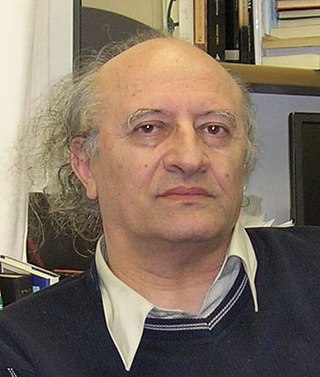
Moshe Idel is a Romanian-born Israeli historian and philosopher of Jewish mysticism. He is Emeritus Max Cooper Professor in Jewish Thought at the Hebrew University, Jerusalem, and a Senior Researcher at the Shalom Hartman Institute.

Ruth Schloss was an Israeli painter and illustrator. Major themes in her work were Arabs, transition camps, children and women at eye-level. She expressed an egalitarian, socialist view via realism in her painting and drawing.

Shulamit Bat-Dori was a Polish-Israeli playwright, kibbutz theatre director and producer, and dance festival director. A member of Hashomer Hatzair and its kibbutz, Mishmar HaEmek, she was involved in the development of political theatre in Palestine, writing and producing plays that reinforced the ideology of the Kibbutz Movement. She was known for her huge, open-air performances that enlisted hundreds of kibbutz members and attracted thousands of viewers. She represented Israel at international conferences and was a professor in the theatre department at Tel Aviv University from 1965 to 1974.

Beit Terezin or Beit Theresienstadt is a research and educational institution that opened in 1975 in Kibbutz Givat Haim (Ihud), a museum and a place of remembrance of the victims of Nazi Germany persecution at the Theresienstadt concentration camp.

Hadar Gad is an Israeli artist.